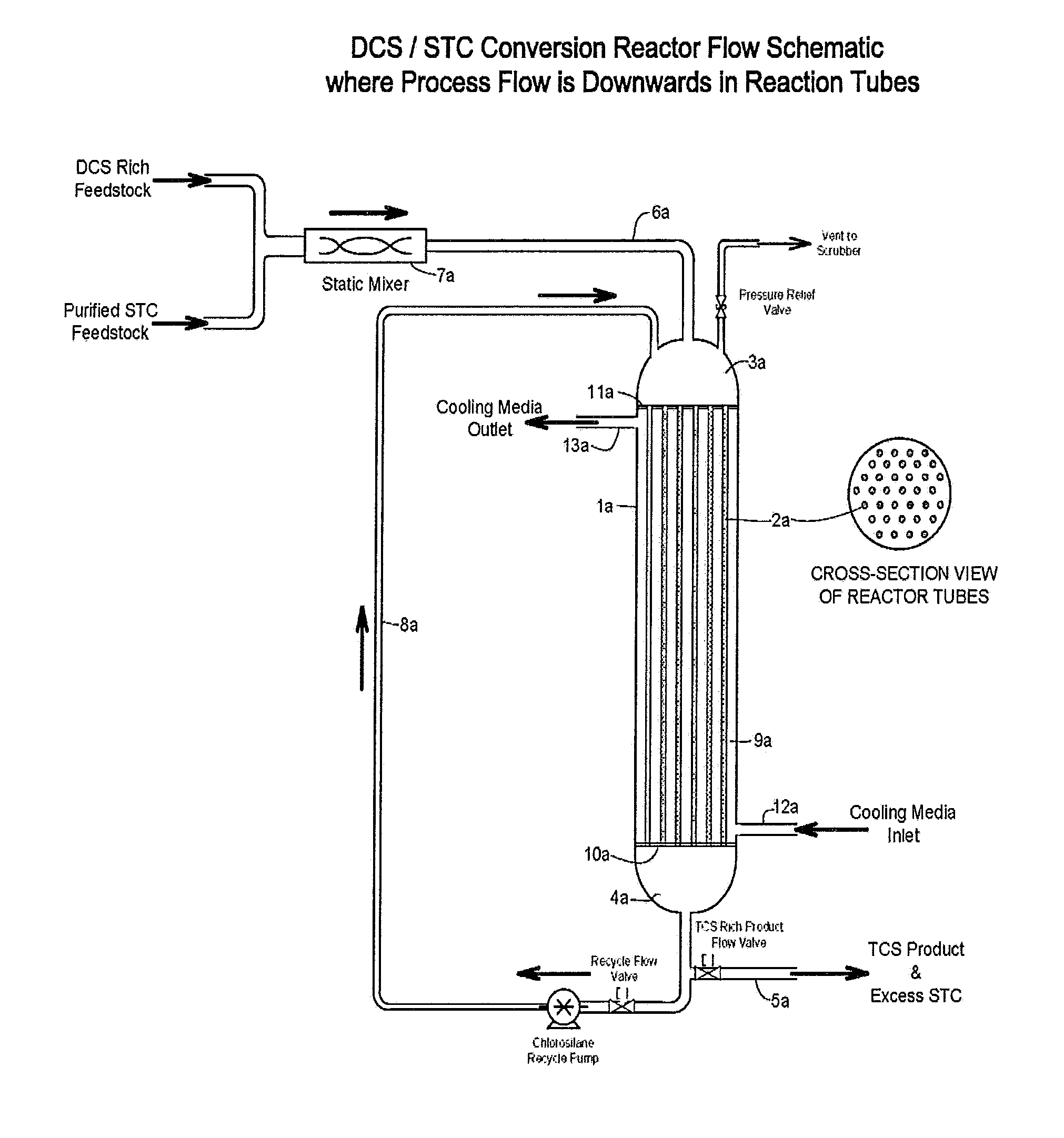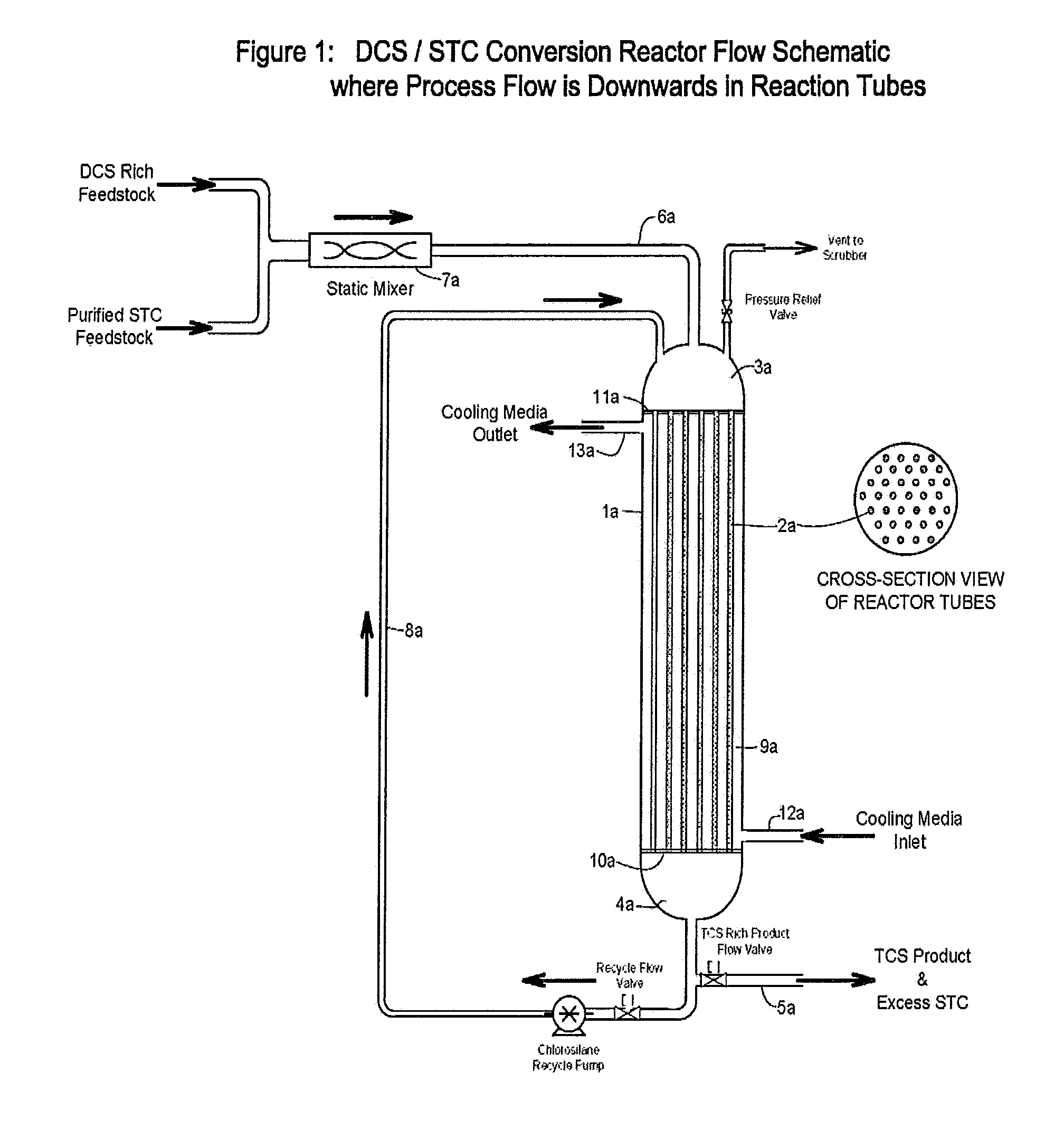Enhancements for a chlorosilane redistribution reactor
a chlorosilane and redistribution reactor technology, applied in the field of trichlorosilane preparation, can solve the problem that dcs is no longer widely used in the production of commercial polysilicon
- Summary
- Abstract
- Description
- Claims
- Application Information
AI Technical Summary
Benefits of technology
Problems solved by technology
Method used
Image
Examples
Embodiment Construction
[0024]The various exemplary embodiments of the present invention include a process and means for reacting two by-products, dichlorosilane (DCS) and silicon tetrachloride (STC), obtained in a chemical manufacture and purification process, in order to produce trichlorosilane (TCS). The present embodiments produce more TCS to be recycled back to a beginning of a TCS purification process. A net sum chemical reaction equation is stated as follows:
H2SiCl2+SiCl4→2HSiCl3+Heat of reaction evolved=+11.1 kcal / gm-mole DCS converted
Each above reactant constituent is fed to a tubular reactor as a liquid or a combination of a liquid and vapor, and the end product TCS produced is also in the form of a liquid or a combination of a liquid and a vapor.
[0025]As such, the various exemplary embodiments of the present invention increase production of TCS in an integrated TCS manufacturing process while simultaneously reducing the non-salvagable chlorosilane waste that occurs in the integrated TCS manufact...
PUM
 Login to View More
Login to View More Abstract
Description
Claims
Application Information
 Login to View More
Login to View More - R&D
- Intellectual Property
- Life Sciences
- Materials
- Tech Scout
- Unparalleled Data Quality
- Higher Quality Content
- 60% Fewer Hallucinations
Browse by: Latest US Patents, China's latest patents, Technical Efficacy Thesaurus, Application Domain, Technology Topic, Popular Technical Reports.
© 2025 PatSnap. All rights reserved.Legal|Privacy policy|Modern Slavery Act Transparency Statement|Sitemap|About US| Contact US: help@patsnap.com



